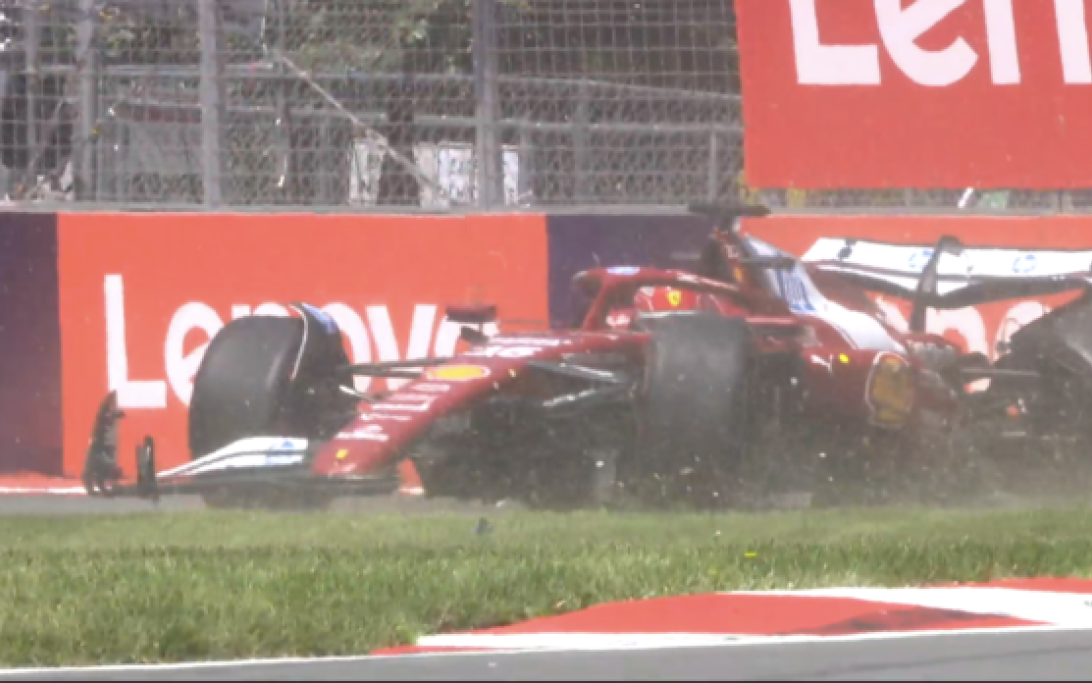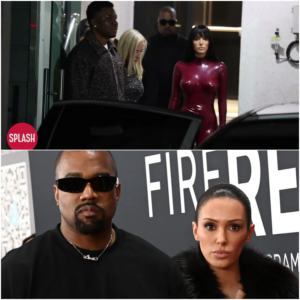Red Flags and Red Faces: Leclerc’s Practice Crash and the Crisis at Ferrari

Fifteen minutes into Free Practice 1 at Circuit Gilles Villeneuve, the weekend took a dramatic turn for Scuderia Ferrari—and not the kind they needed. Charles Leclerc, the man bearing the weight of a directionless season, lost control of his SF-25 into Turn 3, bringing out an early red flag. The session had barely found rhythm before Ferrari’s No. 1 hope had found the wall.
This wasn’t just another minor excursion. It was a heavy shunt, a defining image of a team on the brink. With zero wins to their name this season, growing pressure inside Maranello, and the eyes of the paddock watching, Leclerc’s crash was more than a moment—it was a metaphor.
A Hot Lap, Cold Tires, and a Critical Misjudgment
Leclerc had been setting a blistering early pace, topping the time sheets with a 1:13.885—no small feat on a track notorious for its green, low-grip early conditions. Running on soft compound Pirellis, he was clearly pushing to test the limits.
But Turn 3 had other plans.
Braking late, the Ferrari locked its right front—a classic misjudgment of grip on a Montreal track still evolving with rubber. Instead of taking the conservative route and bailing, Leclerc committed. Perhaps too much. He tried to save the lap by riding the grass, threading through a narrow gap to rejoin, but physics intervened. The left side of the car clipped the tire barrier with sickening force. Carbon fiber flew. The red flag was immediate.
As his scarlet machine sat disabled, fans and commentators alike asked the obvious: was this an unavoidable consequence of an ambitious run, or the first visible crack in a Ferrari system starting to buckle under pressure?
Apologies and Aftermath
Leclerc, ever the professional, was uninjured and calm on the radio. “Sorry guys,” he said over team comms. A simple apology—but layered with subtext. This is a team searching for form, identity, and reliability, and one of its best weapons had just sidelined himself 15 minutes into the weekend.
The car was recovered. The session resumed. But the real damage was harder to quantify. Lost track time. Shaken confidence. And for a team already low on performance capital, it felt like another gut punch.
Ferrari’s weekend was already off to a wobbly start—and this crash tipped it toward instability.

One Crash, Many Questions
Crashes happen. Montreal’s surface is notoriously slick in early sessions. George Russell ran wide, Lando Norris flirted with the grass, young Andrea Kimi Antonelli locked up, and even Lewis Hamilton spun. But none of them wound up in the wall. Leclerc did.
And that matters.
Because Ferrari’s SF-25 is not just a temperamental car—it’s a demanding one. It shows pace in sectors, but fails to string together consistent laps. It’s aggressive in design but fragile in execution. That’s a dangerous combination when the margins are tight and the pressure is thick.
Leclerc’s crash wasn’t just a mistake—it was a signal that Ferrari’s drivers are compensating, pushing beyond what the car naturally offers. And that’s a dangerous game in Formula 1. When you’re chasing your own limits rather than your rivals, you’re not progressing—you’re surviving.
The Bigger Picture: Dysfunction at Maranello?
This moment can’t be viewed in isolation. Ferrari hasn’t won a race this season. The team has struggled with in-race strategy, inconsistent car behavior, and a lack of adaptability between circuits. Leclerc, previously seen as a calm and calculated racer, has begun showing signs of stress—snapping at strategy calls, overdriving in moments that require patience.
And then there’s the Hamilton factor.
Lewis Hamilton’s arrival for 2025 has cast a long shadow over the current campaign. Everyone in the paddock knows Ferrari’s leadership is betting big on the seven-time world champion to bring order, leadership, and maybe even titles. But that’s next year. In the meantime, the present feels adrift.
Leclerc was supposed to carry the team this season—lead development, inspire performances, and bring home points. But now, 15 minutes into an important weekend, he’s in the wall. It raises fair questions: is he feeling the weight? Is the team giving him a platform to succeed? Or is this all symptomatic of deeper dysfunction within Ferrari’s technical and leadership structure?
The Red Flag That Might Define a Weekend
The session was only paused for about 10 minutes while the barriers were checked and the Ferrari was cleared. But in that time, a thousand silent conversations played out across the garages.
At Mercedes, Hamilton’s camp surely watched closely. Every setback for Leclerc piles on expectations for his arrival. At Red Bull and McLaren, engineers marked down just how fragile the red car looked when pushed.
And inside Ferrari? Fred Vasseur, the team principal already under intense scrutiny, likely felt the heat rise. The calls for accountability grow louder when expectations go unmet. Montreal was supposed to be a rebound. Now, it’s at risk of becoming a catastrophe.
The Road Ahead
Leclerc’s incident doesn’t end the weekend. He’ll have a rebuilt car for FP2. He’ll likely still be quick. The fans will still chant his name on race day.
But this crash plants a seed of doubt. And in Formula 1, doubt is a virus. It spreads in setups, in pit wall strategy, in driver confidence. If Ferrari can’t reset quickly—both technically and mentally—Montreal could unravel completely.
This weekend now carries an additional narrative weight. Will Ferrari bounce back and stabilize, showing resilience and pace in qualifying? Or will this be another chapter in what is quickly becoming a season of squandered potential?
Final Thoughts
Charles Leclerc’s crash wasn’t just a cold-tire mistake. It was a red flag in more ways than one. For the driver. For the team. And for a season that already feels like it’s veering off course.
This isn’t about blaming one driver. It’s about recognizing a pattern—a talented team, stuck in limbo, reaching for answers and instead finding more problems.
Ferrari needs more than fast laps. It needs vision. Unity. Consistency. Otherwise, no amount of pole positions will change the outcome.
Full Video:




